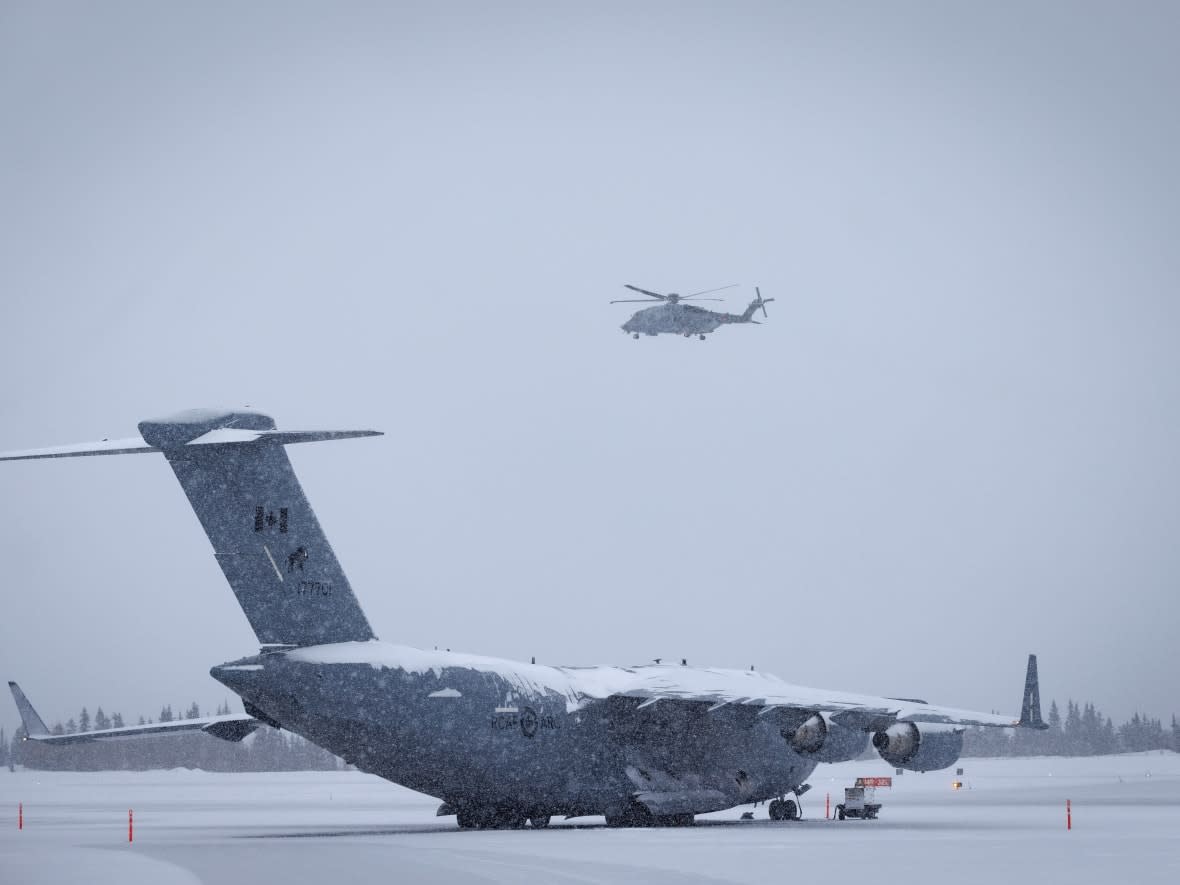Debris of 'suspected balloon' may never be found in Yukon, after search called off

Filmmaker Andrew Gregg says it was never going to be easy, finding the remnants of a "suspected balloon" downed over Yukon a week ago.
"Quite frankly, I think this is more daunting than trying to find the Skymaster," he said, referring to the U.S. military aircraft that was the subject of his 2022 documentary film, Skymaster Down. That plane, with 44 passengers on board, disappeared in Yukon in 1950 and has never been found.
"Not a rivet has turned up. So yeah, the Yukon has an ability to just absorb these things."
On Friday, RCMP said that the search for debris from the suspected balloon had been suspended after a little less than a week. The object had been shot down by the North American Aerospace Defense Command (NORAD) on Feb. 11, with the debris thought to be somewhere in the vast, wild country between Dawson City and Mayo, Yukon.
"Given the snowfall that has occurred, the decreasing probability the object will be found and the current belief the object is not tied to a scenario that justifies extraordinary search efforts, the RCMP is terminating the search," police said in a news release on Friday.
The missing object was one of four mysterious objects shot down over North America earlier this month. Of those, only one has been identified — China says the 60-metre balloon downed off the coast of South Carolina was for monitoring weather conditions, but Washington says it was a surveillance balloon with a massive undercarriage containing electronics.
Searches for the other mysterious objects — in Alaska, and Lake Huron — have also been called off
A few days into the search in Yukon, Chief of the Defence Staff Gen. Wayne Eyre said that object was a "suspected balloon," and that the search for debris in Yukon was hampered by the "remote, mountainous area with deep snow, risk of avalanche, and harsh weather conditions."

Gregg is not surprised that the search proved difficult, if not impossible.
"How do you find something when you're not even sure what it is, in a place like the Yukon wilderness, in the winter? Like, I have no idea how you even begin," Gregg said.
Was it a hobby balloon?
One theory of the Yukon object is that it actually belongs to a small hobby club in the U.S. On Feb.11 — the day the object was shot down — the Northern Illinois Bottlecap Balloon Brigade received its last transmission from one of its pico balloons on its seventh circumnavigation around the world. The balloon was near Hagemeister Island, off the southwest corner of Alaska, and projected to float on over Yukon.
Steve Trimble of Aviation Week reported on the possible connection. He says the organization has been very publicity-shy.
"They may have been able to set a new distance record if it hadn't been shot down by a missile," Trimble said.
"I think they're quite embarrassed and quite, you know, aghast at all the fuss that they feel that they may have caused."
Trimble says pico balloons — typically inflated to about three-feet in diameter and sent to float at high altitude with a tracker — is mostly a recent phenomenon.
"Nobody really knew this hobby was out there," he said. "I don't think NORAD understood it."
He's also not surprised that the search for debris in Yukon has ended. The remains of a pico balloon would be impossible to find, he says.
"I mean, the winds are going to take the little fragments who knows where, and it's not big to begin with. So you're never going to see this stuff again," he said.


